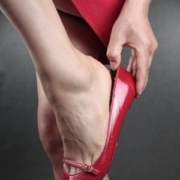Staying Safe at the Salon: 5 Pros and Cons of Pedicures
Many of us can benefit from an occasional pedicure’s ability to reduce inflammation, improve sensation in the feet, and promote healing. However, we at Carrollton Foot Center want you to know that pedicures can also be dangerous, especially for those with diabetes, peripheral neuropathy, and weakened immune systems.
In this article, we’ll weigh both sides of the bathtub, from improved circulation to possible infection, to help you determine if pedicures are right for you.
The Pros and Cons
Pro: Improved Circulation
The massage techniques used by nail technicians stimulate blood flow in the feet and ankles.
Con: Infection
This massaging effect may not stimulate sensation in diabetics or those with peripheral nerve damage, meaning they are still susceptible to wounds from pedicure techniques.
Pro: Early Detection
Trained pedicurists can identify signs of potential problems like calluses and ingrown toenails.
Con: Inexperience
Untrained technicians may not notice the signs of a problem that a podiatrist can, leaving you with a false sense of security and confidence in your feet.
Pro: Exfoliation and Skin Health
Pedicures remove dead skin layers that lead to dryness, roughness, and cracking.
Con: Cuts and Abrasions
Even minor nicks from tools or buffing the cuticle can become entry points for infection, especially for diabetics with decreased circulation.
Pro: Improved Toe Health
Regular trimming and filing during a pedicure helps maintain proper toenail shape and generally prevents ingrown toenails.
Con: Ingrown Toenails
However, improper and aggressive trimming techniques can increase the risk of ingrown toenails and fungal nail infections.
Pro: Maintaining Good Foot Hygiene
The soaking, cleansing, and drying process removes dirt, sweat, and bacteria that can accumulate on the feet.
Con: Harsh and Unsanitary Tools
Improperly sterilized tools can spread bacteria or fungus. Some salons may also use strong chemicals in foot soaks or polishes that can irritate the skin, leading to allergic reactions or rashes.
Consult with Board-certified podiatrist Dr. Naghmeh Lilly Khavari, an esteemed expert who is dedicated to her patients in Denton, Dallas, and Collins Counties. She helps with a wide breadth of issues, from ingrown toenails to diabetic neuropathy. Call Carrollton Foot Center’s office (located in Carrollton, Texas) at (469)-998-3668 to schedule your initial appointment today!








